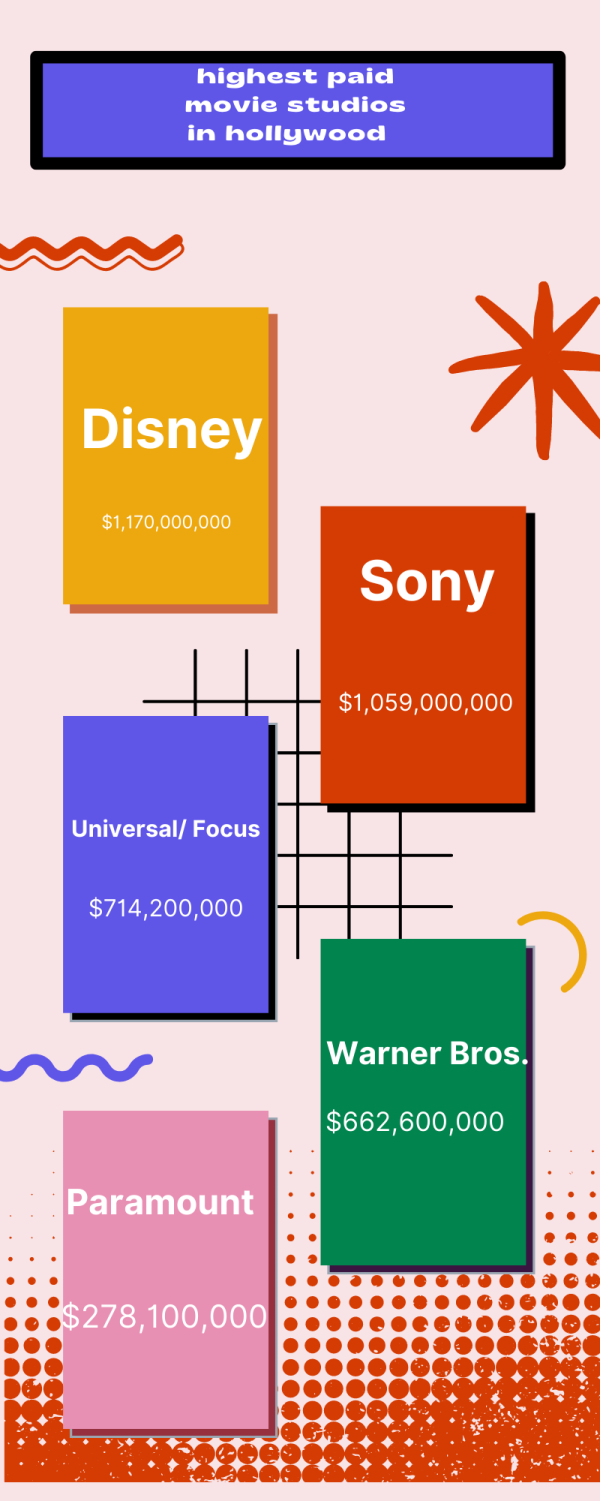The gender divide in hollywood
May 17, 2022
Since it first became America’s film industry capital around 1915, Hollywood has produced an approximation of 500,000 movies. However, Hollywood has what Vox magazine calls a “devastating” gender divide.
According to a 2021 survey from Women and Hollywood, only 41% of the 100 top-grossing films featured a female lead or co-lead. But this number only represents female actresses in movies, not those behind the camera. Women don’t get enough recognition or accurate representation in Hollywood.
“The real Hollywood is still an old boys club,” Kelsey McKinney, an author from Vox, wrote. “Film too often suggests women should see themselves as supporting characters.”
McKinney added that Hollywood “fails” at gender representation, citing the Bechdel Test, a litmus test used to determine the involvement of female characters in movies as fully developed characters or as devices for a male character to further the plot.
The three questions used in the Bechdel Test are simple: are there more than two named female characters? Do the two female characters have a conversation at any point? Is the conversation about anything other than a male character?
Originally created in 1985 by Alison Bechdel and Liz Wallace and occasionally called the Bechdel-Wallace test, it was used in a study of 1,794 films ranging from 1970 to 2013, and nearly half failed.
“Some of my favorite movies don’t pass the test at all,” Bechdel commented in a Stylist article. “But I’ve made peace with it. I’m actually very happy about it because I feel like the general idea that women should be treated as fully human people in a movie, just as they should be in life, is a really good idea.”
Not only is the gender divide apparent on the screen, it’s true behind the scenes as well, with only 18% of women directors comprising the top 250 grossing films of 2020. Despite the low percentage, it broke recent historical patterns, according to Dr. Martha M. Lauzen, a researcher who specializes in the field of women in film.
Lauzen is the founder and executive director of the Center for the Study of Women in Television and Film. Yearly, they publish the Celluloid Ceiling report, a study solely focused on tracking female involvement in Hollywood.
“Gender stereotyping persists in the way women are portrayed,” Lauzen reported to the World Economic Forum. “Overall, audiences were almost twice as likely to see male than female characters in the top 100 films.”
However, there has been a rise in female directors since, in a 2021 study, the number of women behind the scenes in films has increased to 25%, that still isn’t enough progress compared to 23% in 2020, only two percent lower.
In response, movements like #metoo and organizations like Women in Film have been working towards offering more equal opportunities for women. Women in Film’s ultimate goal is to convince Hollywood to portray female characters that are more than just a brief mention from a male character to further the plot.
“Women make up 50 percent of the population,” McKinney commented. “So why don’t they make up 50 percent of Hollywood as well?”
Anne Thompson, an Indiewire author, told Vox that men are “uncomfortable” writing female characters. She believes more women are needed who can create female characters that aren’t just believable and complex with a depth that mutual understanding can achieve.
“If there’s gender inertia behind the scenes, you will find gender inertia onscreen,” Lauzen said in the New York Times interview. “The percentage of female speaking roles in Hollywood has remained virtually the same since the 1940s.”

Sources
- How Many Movies Has Hollywood Made? – TGDM
- Hollywood – HISTORY
- Hollywood’s devastating gender divide, explained – Vox
- 2021 Statistics | Women and Hollywood
- Here’s how gender stereotypes are plaguing Hollywood films despite progress
- The inventor of the Bechdel Test talks Trump, activism and #MeToo
- Female directors reached record highs in 2019 Hollywood | World Economic Forum
- This is how female representation is rising across the film industry
- 9 Entertainment Organizations That Champion Women



